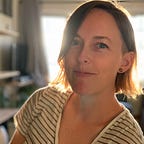Comic about Identity Development Model for non-monosexuals a.k.a. bi+ Community
The coming out process for bisexual or non-monosexual identified individuals is different than that of their monosexual counterparts. You may have seen some identity models before that culminate with a final stage being pride, celebration, or synthesis. Bi+ and non-monosexuals have a lot to be proud of and a lot to celebrate. However, in a predominately monosexual culture, they may feel pressure to continue to think about if the bi label still fits for them. Brown (2002)’s final stage, ends with “Identity Maintenance.” While there should certainly be pride, celebration, and synthesis, the Bi+ and non-monosexual community may still experience some unrest due to biphobia or other stigmas from the monosexual community.
I resonate with an analogy shared by Dr. Mimi Hoang in her training. She shared that when someone is ambidextrous, and they use their right hand they don’t change how they identify to right-handed. They still are ambidextrous. As an example, when a Bi+ woman dates another woman, others often assume the Bi+ woman is lesbian. Her Bi+ identity becomes less observably visible. The Bi+ community often experiences erasure when other people make assumptions based on their observed behavior. Imagine having your identity erased by an acquaintance, a good friend, a doctor, or a therapist. A Bi+ individual maintains their identity regardless of who they are currently dating. Bisexuality is a normal, natural, and real identity.
I was struck by another statistic shared in Dr. Hoang’s presentation from the Invisible Majority: The Disparities Facing Bisexual People and How to Remedy Them — that “the majority of bisexual people in relationships are in relationships with people of the [other]-sex. Eighty-four percent of bisexual people in a committed relationship are involved with someone of the [other]-sex. Another 4% of bisexual people have a spouse or partner who is transgender.” For Bi+ individuals with other-sex partners, they may feel challenged around how to honor their full identity. For some, it may feel really validating and meaningful to connect with the Bi+ community at large. Each individual may discover their own way of finding true identity congruence.
I’ll end with Robyn Ochs definition of bisexuality:
“I call myself bisexual because I acknowledge that I have in myself the potential to be attracted — romantically and/or sexually — to people of more than one gender, not necessarily at the same time, not necessarily in the same way, and not necessarily to the same degree.”
For more information, please check out the below sites and resources:
- Dr. Mimi Hoang — https://www.drmimihoang.com/index.html
- Robyn Ochs — https://robynochs.com/
- Movement Advancement Project: Invisible Majority: The Disparities Facing Bisexual People and How To Remedy Them — https://www.lgbtmap.org/policy-and-issue-analysis/invisible-majority
- L.A. LGBT Center — https://lalgbtcenter.org/
- amBi Los Angeles (Meetup Group) — http://www.meetup.com/AMBILA/
- American Institute on Bisexuality — https://www.americaninstituteofbisexuality.org/
- Bisexual Resource Center — https://biresource.net/
- Bisexual Health Awareness Month — https://bihealthmonth.org/
- L.A. Bi Task Force — https://labitaskforce.org/
- #StillBisexual — http://stillbisexual.com/
